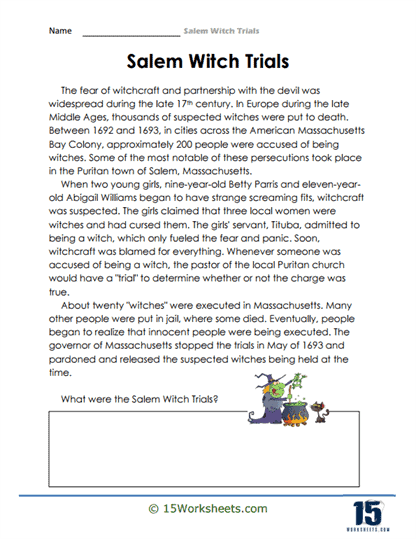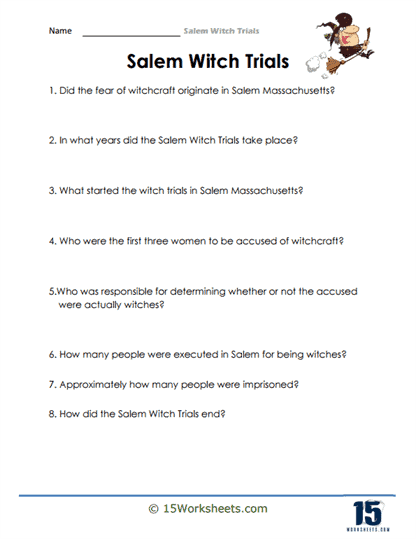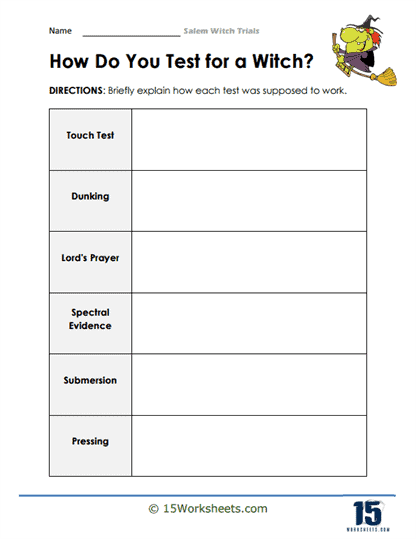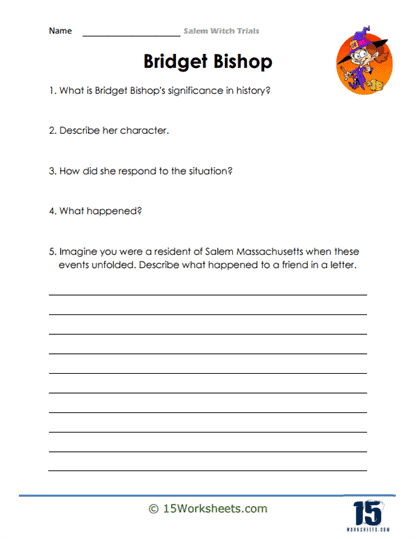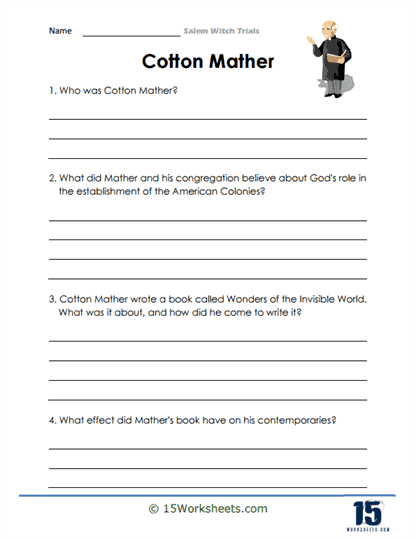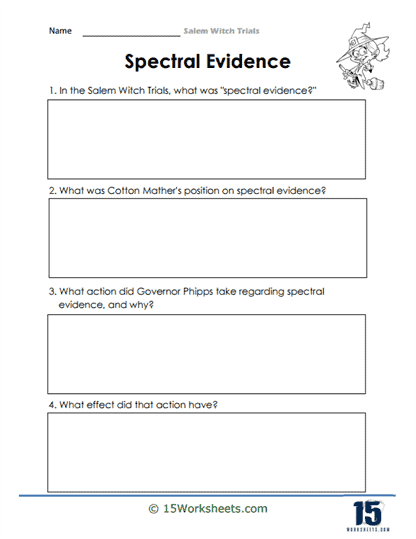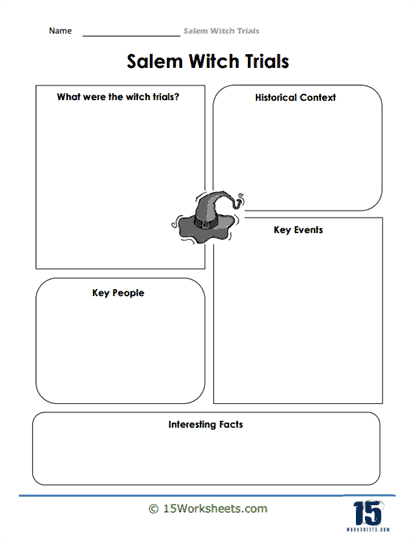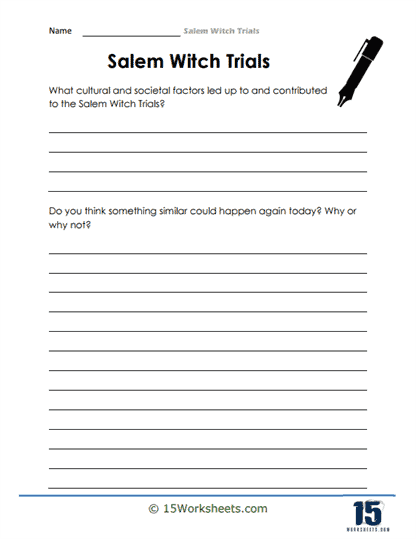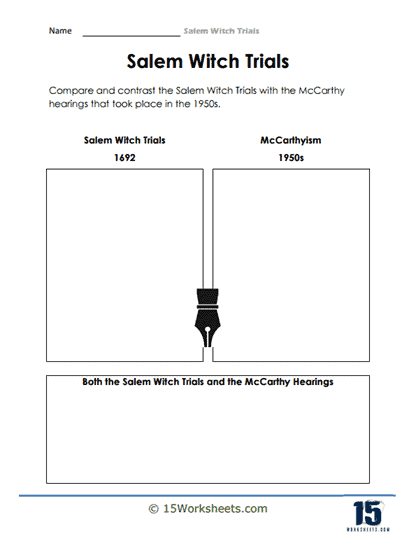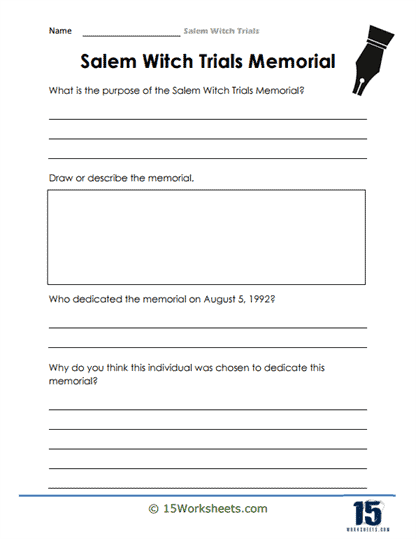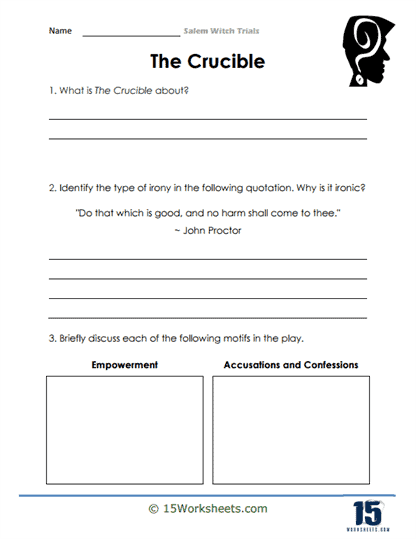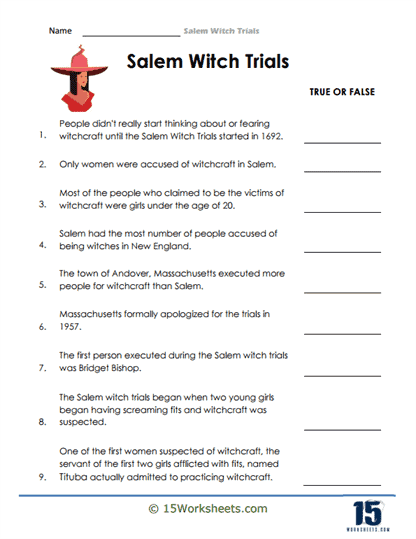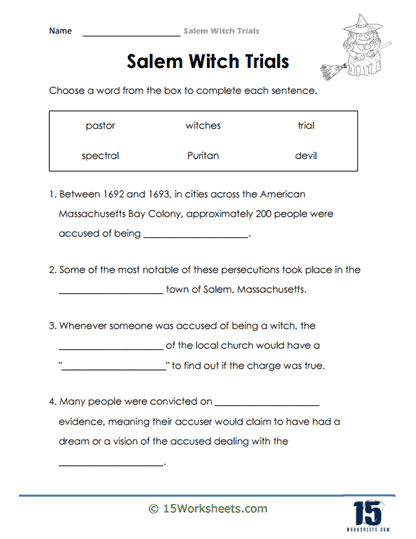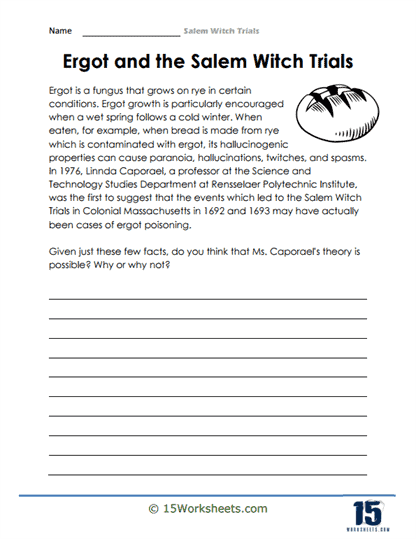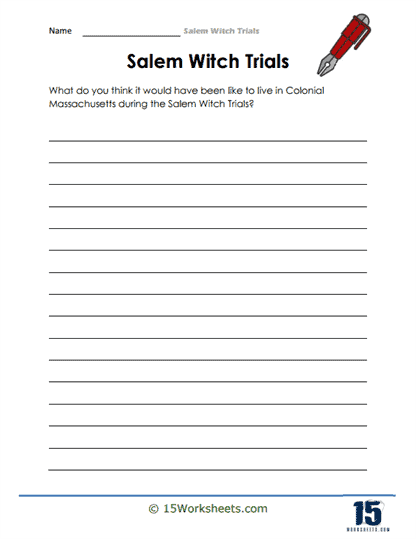Salem Witch Trials Worksheets
All About These 15 Worksheets
This collection of worksheets on the Salem Witch Trials is a valuable educational resource that delves into one of the most intriguing and dark chapters in American history. These worksheets provide students with a comprehensive understanding of the events that unfolded in 17th century Salem, Massachusetts, allowing them to explore the societal, cultural, and psychological factors that led to the witch hysteria.
Studying this topic not only offers a window into the past but also encourages critical thinking and analysis as students examine the consequences of mass hysteria, the role of religion, and the importance of due process. By engaging with these worksheets, students gain a deeper appreciation for the complexities of human behavior and the enduring lessons that can be drawn from history.
Students take a step back in time and immerse themselves in the haunting history of the Salem Witch Trials with this series of worksheets. Designed to provide students with a comprehensive understanding of this significant event in American history, these worksheets explore the origins, key figures, evidence, and consequences of the Salem Witch Trials.
By engaging with thought-provoking activities, analyzing primary sources, and making connections to related topics such as McCarthyism and The Crucible, students will develop critical thinking skills, historical empathy, and a deeper appreciation for the complexities surrounding this dark chapter in American history.
This collection serves as a gateway for students to explore the historical, cultural, and societal aspects of the Salem Witch Trials, fostering a broader understanding of the human experience and the impact of mass hysteria. Through these worksheets, students will:
- Explore the methods used during the Salem Witch Trials to determine if someone was a witch;
- Investigate the case of Bridget Bishop, one of the first individuals accused and executed during the trials;
- Examine the role of Cotton Mather, a prominent figure in the Salem Witch Trials, and explore his influence on the events;
- Study the use of spectral evidence during the Salem Witch Trials, where the testimony of apparitions or spirits was accepted as proof of guilt;
- Create an infographic summarizing key information and statistics related to the Salem Witch Trials;
- Do a comparative analysis on the similarities and differences between the Salem Witch Trials and McCarthyism, a period of intense anti-communist sentiment in 1950s America, which will aid them in gaining a deeper understanding of the recurring themes of fear, accusation, and the impact of mass hysteria on individual lives;
- Learn about the Salem Witch Trials Memorial and reflect on its significance as a remembrance of the events and the individuals affected;
- Analyze Arthur Miller’s play, The Crucible, which dramatizes the events of the Salem Witch Trials;
- Explore the theory that the hallucinogenic effects of the fungus ergot may have played a role in the hysteria surrounding the Salem Witch Trials;
- And reflect on the consequences of mass hysteria, the importance of critical thinking, and the relevance of historical events to contemporary society.
By delving into this compelling series of Salem Witch Trials worksheets, students will develop a comprehensive understanding of this haunting chapter in American history. Through thought-provoking activities, analysis of primary sources, and connections to related topics, students will gain critical thinking skills, historical empathy, and a deeper appreciation for the complexities surrounding mass hysteria and its consequences. As students explore the events, key figures, and societal impacts of the Salem Witch Trials, they will not only gain historical knowledge but also cultivate a broader understanding of human nature, the dangers of unfounded accusations, and the importance of safeguarding justice in society.
What Were the Salem Witch Trials?
The Salem Witch Trials were a series of hearings and prosecutions of people accused of witchcraft in colonial Massachusetts, USA, between February 1692 and May 1693.
The trials began in the town of Salem when several young girls, including Betty Parris and Abigail Williams, started having fits, which were believed to be caused by witchcraft. They accused several women in the community of being witches and practicing witchcraft.
The accusations quickly spread, and many other people were accused of witchcraft, including men and women of all ages and social statuses. The trials were conducted in a court of law, but the evidence used to convict people was often based on rumors, hearsay, and spectral evidence (testimony about dreams and visions).
Over the course of the trials, more than 200 people were accused, and 20 were executed, including 14 women and 6 men. One man was pressed to death with stones when he refused to enter a plea. The trials eventually came to an end when the governor of Massachusetts intervened and put an end to the proceedings.
The Salem Witch Trials are now widely regarded as a dark chapter in American history and a cautionary tale about the dangers of mass hysteria, prejudice, and intolerance.

